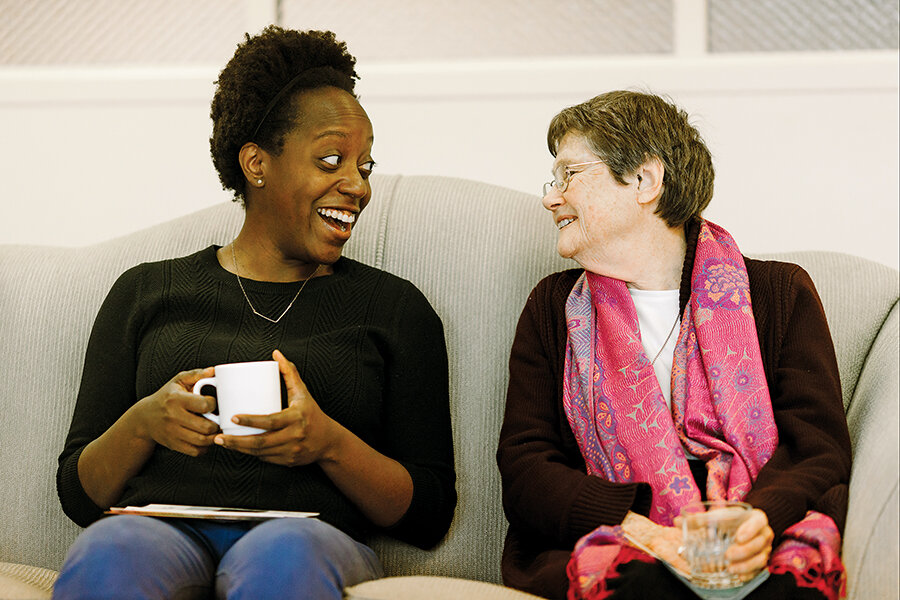How an alliance between Millennials and religious sisters has changed outlooks
This essay is part of an occasional series provided by our partner organization Encore.org, which created the Generation to Generation (Gen2Gen) campaign, inviting those in midlife and beyond to connect with young people who need champions.
The number of Roman Catholic women religious – colloquially known as nuns – in the United States fell about 75 percent between 1965 and 2016, according to Catholic News Service. But many of the approximately 49,000 women leading this life today believe that new models and approaches will nourish and grow their traditions of spiritual practice and social justice.
One of those new models is an unlikely intergenerational alliance called Nuns & Nones, which matches sisters with spiritually oriented Millennials who check “none” when asked to identify a religion they affiliate with.
“I had a group of peers asking questions about how we live in community and live lives of service, and what that looks like in the future,” says Adam Horowitz, one of the younger organizers. At a Harvard Divinity School gathering in 2015, Mr. Horowitz mentioned these questions to the Rev. Wayne Muller, who then suggested meeting the sisters.
And so in late 2016, about a dozen Millennials and a dozen nuns gathered for two days with no plan other than talking, listening, and dining together. They all left wanting more. Word spread, and six more gatherings were planned around the country. To date, hundreds have gotten involved in 17 states.
Nuns & Nones received $10,000 as a finalist in 2018’s Gen2Gen Encore Prize competition, which highlights new ideas that can bring the generations together.
Gloria Marie Jones is with the Dominican Sisters of Mission San Jose in Fremont, Calif. She attended her first Nuns & Nones gathering at Mercy Center, a ministry of the Sisters of Mercy in Burlingame, Calif. “It was really like this leap into the unknown,” she says. “We sat in a big circle and the initial question was, What are the deepest questions your heart is holding? It immediately took us into a level of common humanity, vulnerability, and oneness.”
The resulting conversation was life-changing. “I truly was blown away by the insights that were shared,” Sister Jones continues, “listening to these beautiful young people who want to create a better world, who are searching for intentional community and want to learn from us.”
Brittany Koteles, who is in her late 20s, is deeply involved in Nuns & Nones. “There are so many people my age working to heal the world in different capacities – as artists, organizers, social entrepreneurs, or nonprofit professionals. And in parallel, about 40 percent aren’t affiliating with institutional religion,” Ms. Koteles says. “Without clear alternatives, my peers and I risk isolation from the personal healing and spiritual work that’s fundamental to why we’re doing this.”
She adds that the sisters she began meeting with “had models for how I might consider living my life.”
Linda Romey belongs to Mount St. Benedict Monastery in Erie, Pa. She’s been part of monthly Nuns & Nones online conversations, which she says energize her. But what she enjoyed most was when Katie Gordon, one of the young organizers, visited her monastery. “She spent several days with us, praying and eating with the community, visiting our ministries, and taking advantage of our beautiful grounds for some personal retreat time,” Sister Romey notes.
This spring five Millennials, including Horowitz, will experiment with this kind of co-living situation, moving into Mercy Center for six months. “It’s an exciting next step for us,” he says. “We’re all approaching it with a sense of possibility.”
• For more, visit nunsandnones.org.





